The clock strikes midnight, and the clouds are flush with vibrant hues of pink and orange. The summer winds stir strongly, battering your face as you compose yet another ethereal landscape through your viewfinder. It feels as if there is not a soul for miles, and sometimes, this is indeed the case. You are in Iceland—one of the most beautiful and unique landscape destinations in the world.
Words by Michael Bonocore
Photos by Michael Bonocore & Evgeny Tchebotarev, co-founder of 500px.com
Additional Photographs by Benjamin Hardman and Joe Azure
Travel
Iceland is a small European island northwest of the UK and traveling there is relatively easy. Round-trip flights out of most major hubs in the U.S. cost anywhere from $700 to $1,000, while flights from Berlin to Reykjavik, Iceland’s coastal capital, cost about $500. If you happen to find yourself in London, though, flights can be as little as $200. Icelandair is the main carrier in and out of the island, offering non-stop flights from U.S. hubs including Seattle, Denver and Boston. But while in-flight international WiFi keeps you connected at 35,000 feet, be sure to grab a meal at the airport, as Icelandair does not provide complimentary dining on the long haul flight.
Getting Around
Outside of Reykjavik, public transportation is scarce, so renting a car is recommended. Campervans allow you to chase light around the country without having to worry about pre-booked hotel reservations. Sleeping in your camper is allowed almost anywhere, making it by far the most economical option if you need not a comfortable bed and hot shower each night. Campervans from Happy Campers are clean, reliable and fairly priced, but be sure to book ahead—they are often entirely booked for months in advance.
For any other rental car or hotel reservations, it’s best to use the search engine provided by Guide to Iceland to find the lowest prices on the exact type of vehicle you are looking for.
When to Visit
Iceland is a photographer’s dreamland any time of the year. But the subject matter you’re seeking and your tolerance to harsh weather will determine what season is right for you. The summer solstice, which is the basis of this feature, is in June and garners mild temperatures and 24 hours of daylight. Within this time, colorful clouds and incredible light occur for four hours or more, often from 10 p.m. to 2 a.m. This is ideal for landscape-obsessed light seekers, but can also provide perfect conditions for a commercial, adventure or lifestyle photo shoot.
Hot Spots
Reykjavík
Reykjavík is Iceland’s capital city and one of the only places in Iceland with a concentrated population. Over 120,000 residents live in the city, which is over ⅓ of Iceland’s total population of 323,000. Hotels, Restaurants, and bars are abundant in this easily walkable city. In the summer season, make sure to book your accommodation ahead, as the number of tourists usually outnumber the available hotel rooms. And make sure to have plenty of balance on your credit cards, as Reykjavik, as well as the rest of Iceland, may be more expensive than you are used to. If you need to rent a car, find a hotel, plan your trip, or just stare in awe at Iurie Belegurschi’s incredible photography, stop by the offices of Guide to Iceland.
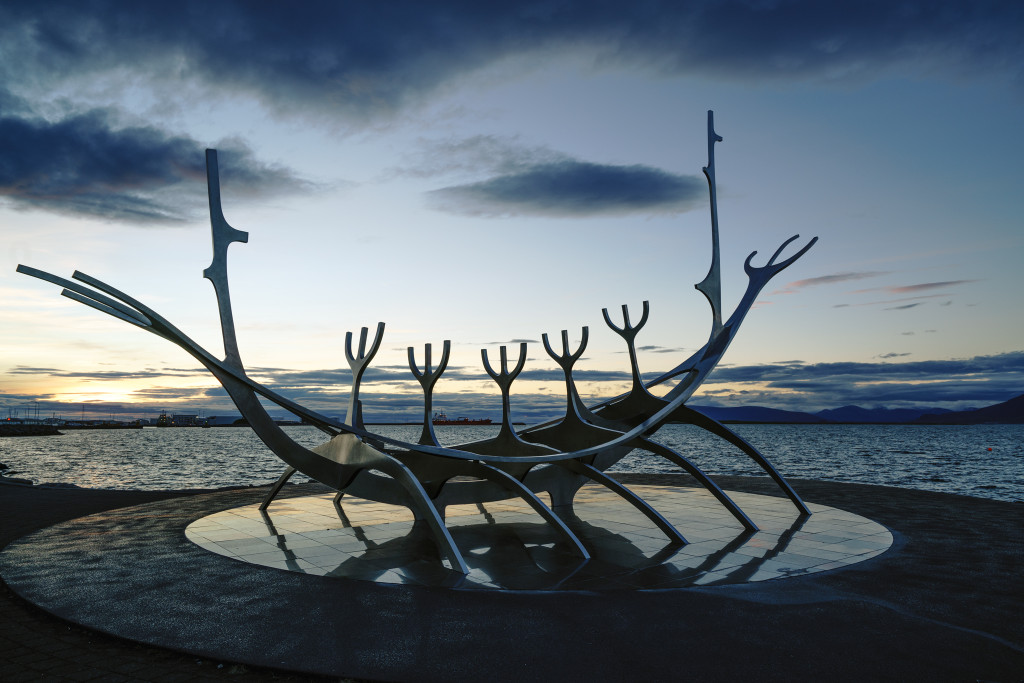
Photo by Michael Bonocore
Snæfellsnes Peninsula
The Snæfellsnes Peninsula provides incredible views of some of Iceland’s most dramatic cliffs and coastline. Fjords, volcanoes and lava rocks are also abundant in the 100km long peninsula. Snæfellsjökull, a 700,000 year old stratovolcano, is a must see. A glacier on the peak of the
1,446 meter mountain provides a cold backdrop for landscape photos. The Snæfellsnes Peninsula is one of the most accessible locations in Iceland, and buses from Reykjavik run regularly. If you plan to stay in the region for more than a day, the northern town of Stykkishólmur has accommodations, restaurants and fuel, which makes it an ideal base camp to explore the Snæfellsnes Peninsula and nearby Kirkjufell.
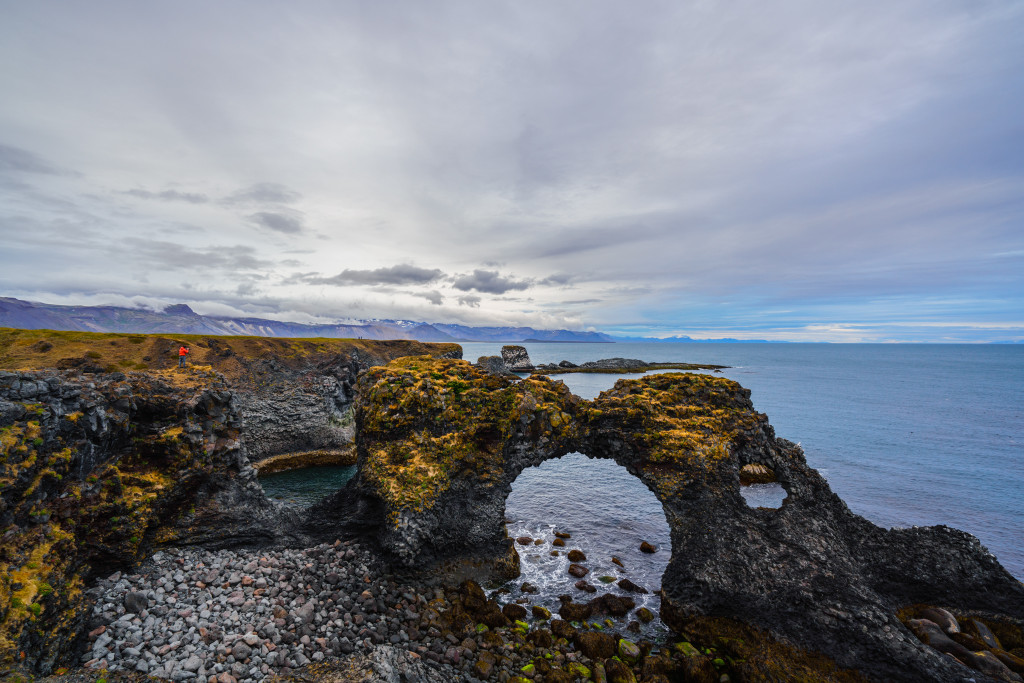
Photo by Michael Bonocore
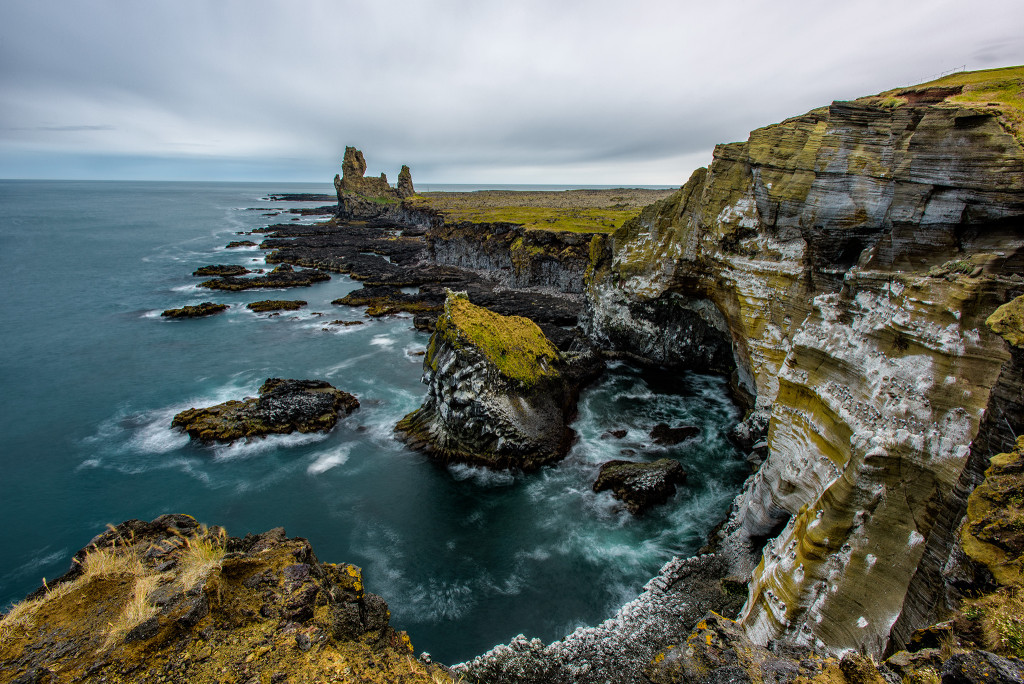
Photo by Evgeny Tchebotarev
Kirkjufell Mountain
Kirkjufell Mountain is one of the most photographed locations in Iceland, and for good reason. The 463 meter cone shaped mountain sits in the background as the picturesque Kirkjufellfoss waterfall gently flows in the foreground. During the summer months, the clouds surrounding the peak can glow pink and orange for hours during the extended sunset and sunrise period.
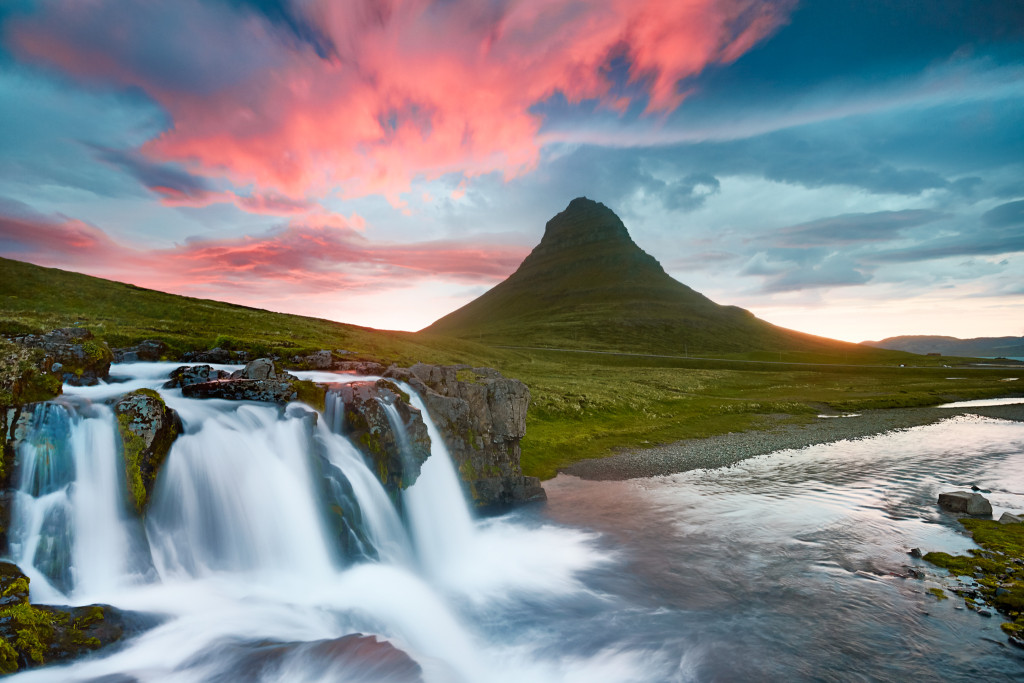
Photo by Michael Bonocore
Landmannalaugar
Perhaps no location in Iceland drops more jaws then the Landmannalaugar highlands. The multicolored rhyolite mountains will make you feel as if you are looking at an oil painting. Natural geothermal hot springs by the campsite provide a warm place to unwind after a long day of hiking through the regions various trails.
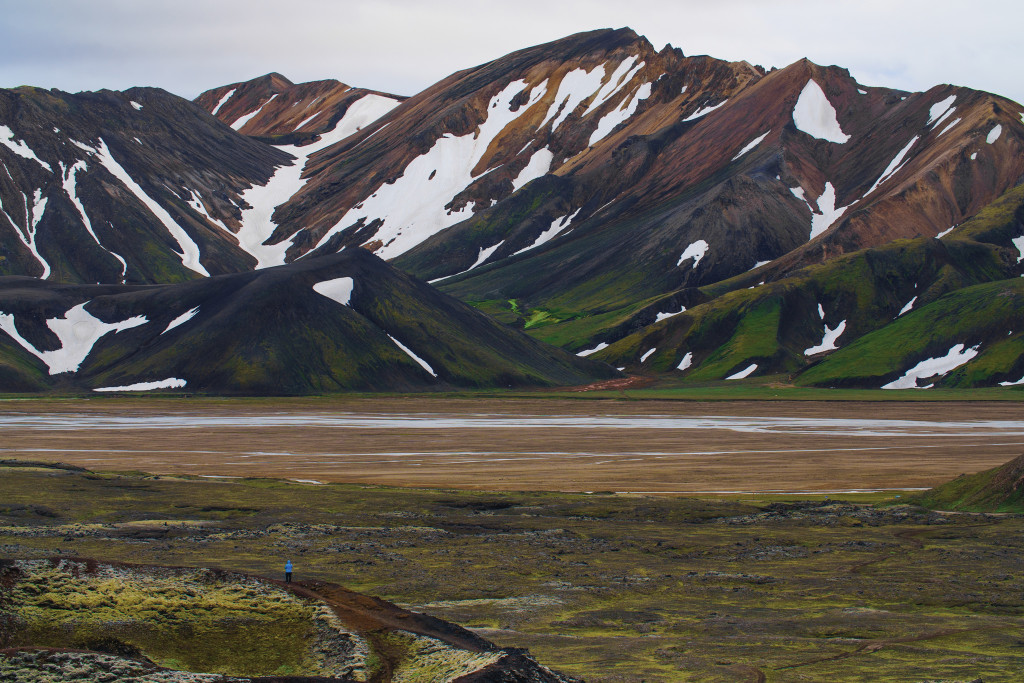
Photo by Michael Bonocore
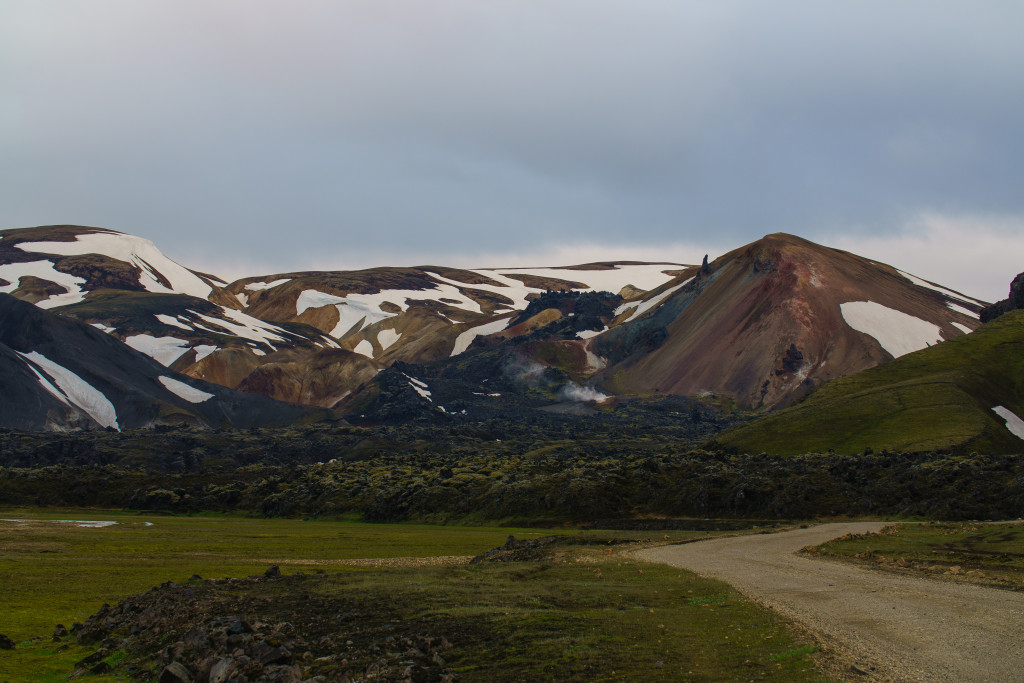
Photo by Michael Bonocore
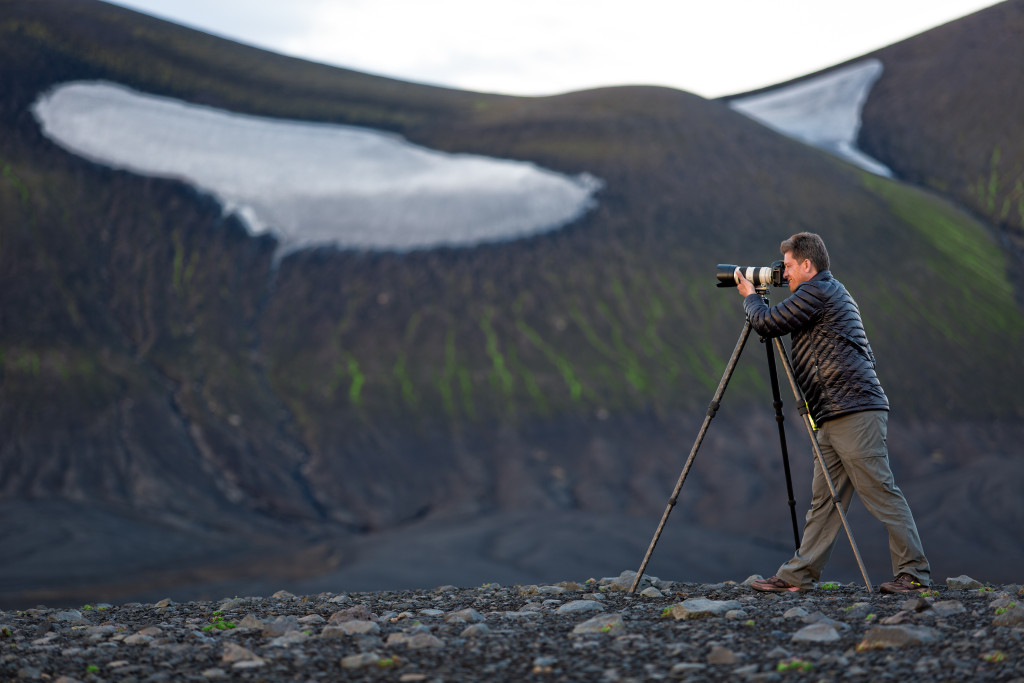
Photo by Michael Bonocore
Jökulsárlón
One cannot go to Iceland without photographing ice, and Jökulsárlón is the place to do just that. The glacial river lagoon collects large chunks of ice that have broken off from Breiðamerkurjökull glacier. In the warmer months, the ice often stays in place for hours or days, before breaking apart with a loud and crushing noise before floating out to the sea. Often, large pieces of ice will get caught on the sandy beach on the opposite side of Route 1, giving photographers incredible foreground elements during the beautiful golden light that occurs in the Icelandic Summer.

Photo by Michael Bonocore
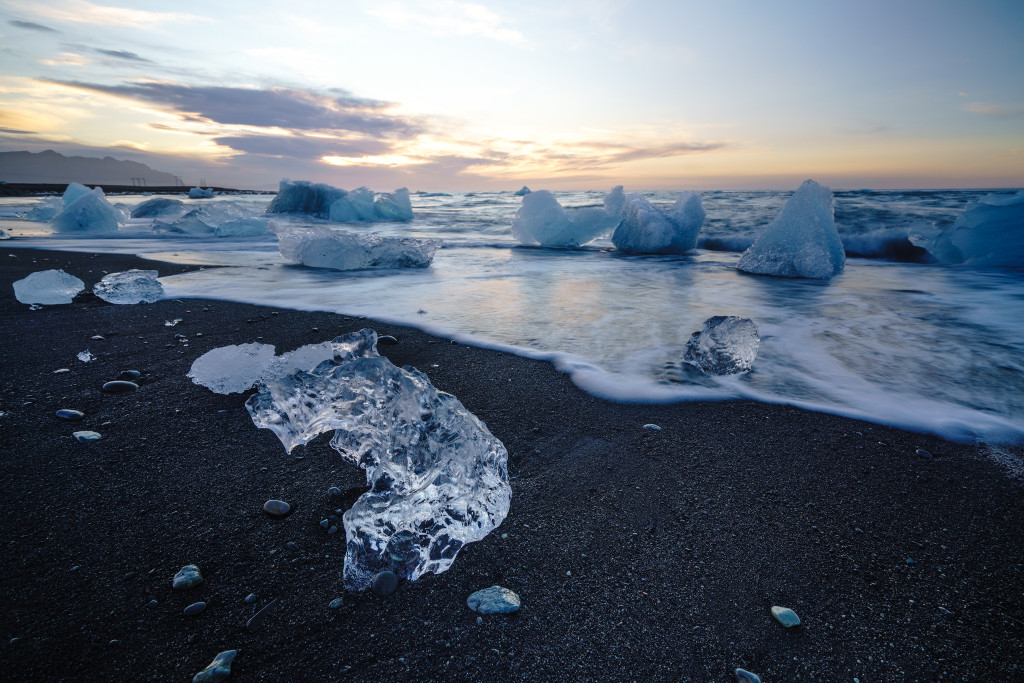
Photo by Michael Bonocore
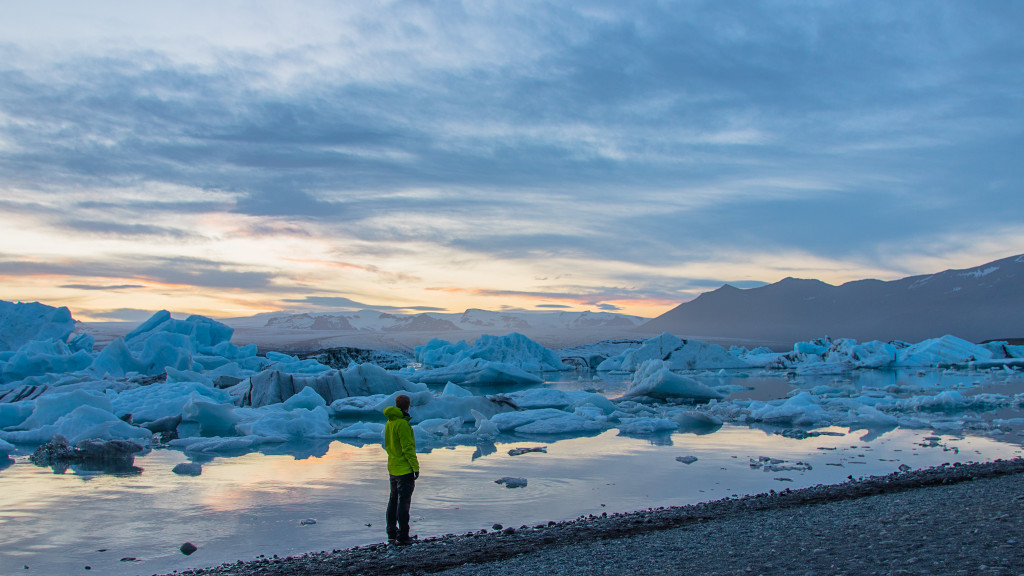
Photo by Michael Bonocore
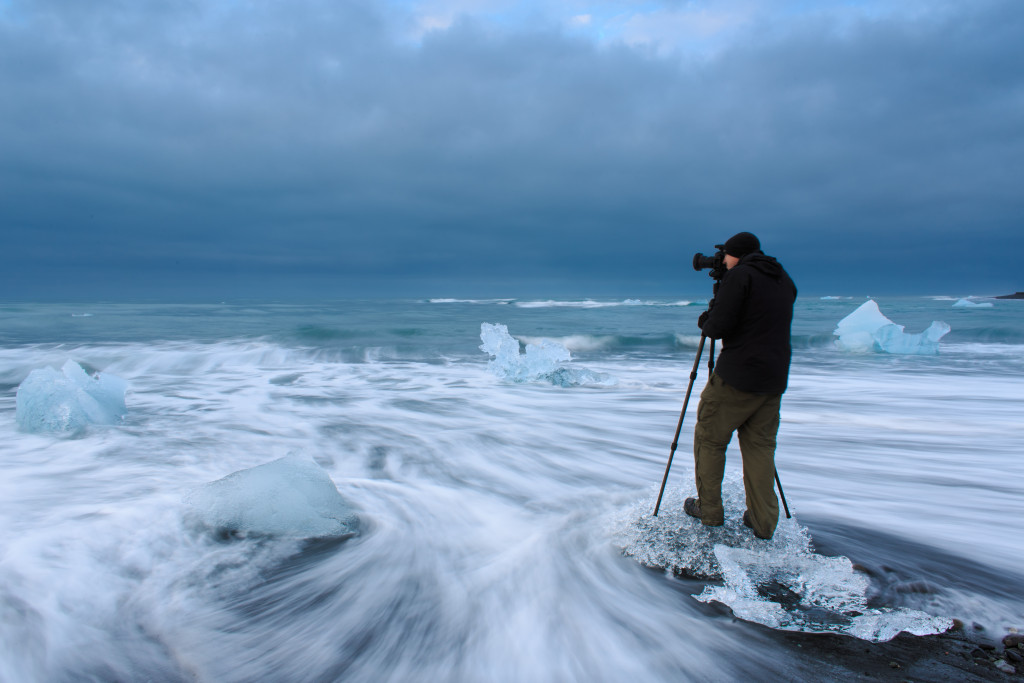
Photo by Michael Bonocore
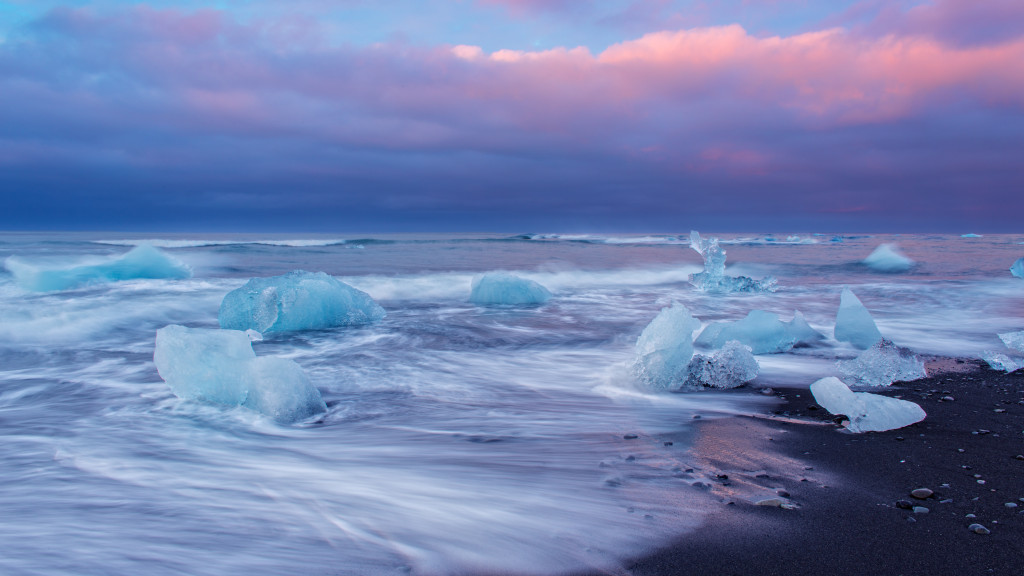
Photo by Michael Bonocore
The Westfjords
According to Lonely Planet, only 14% of visitors to Iceland make it to the remote Westfjords. But if you have the time and means, it is well worth the drive during the summer months, as the jagged coastline cliffs are home to thousands of puffins. Mild tempered, the Puffins don’t mind if you get a little closer for a photo, but keep in mind the cliffs fall hundreds of feet into the ocean below, so shoot and move carefully. A 70-200mm lens is ideal to capture the details of the puffins eyes and feathers.
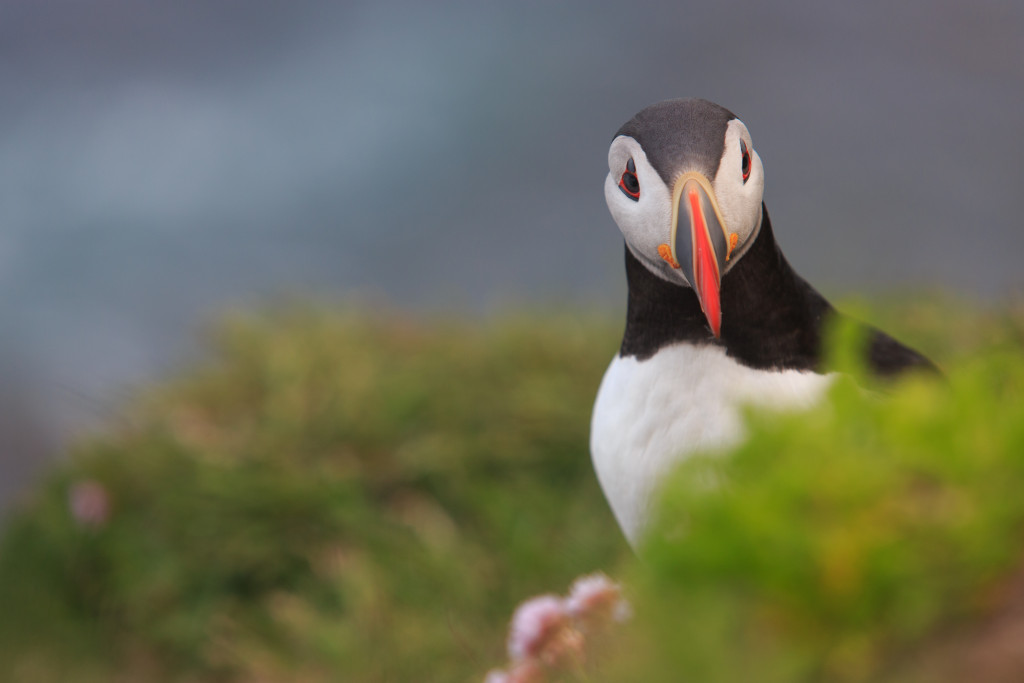
Photo by Michael Bonocore
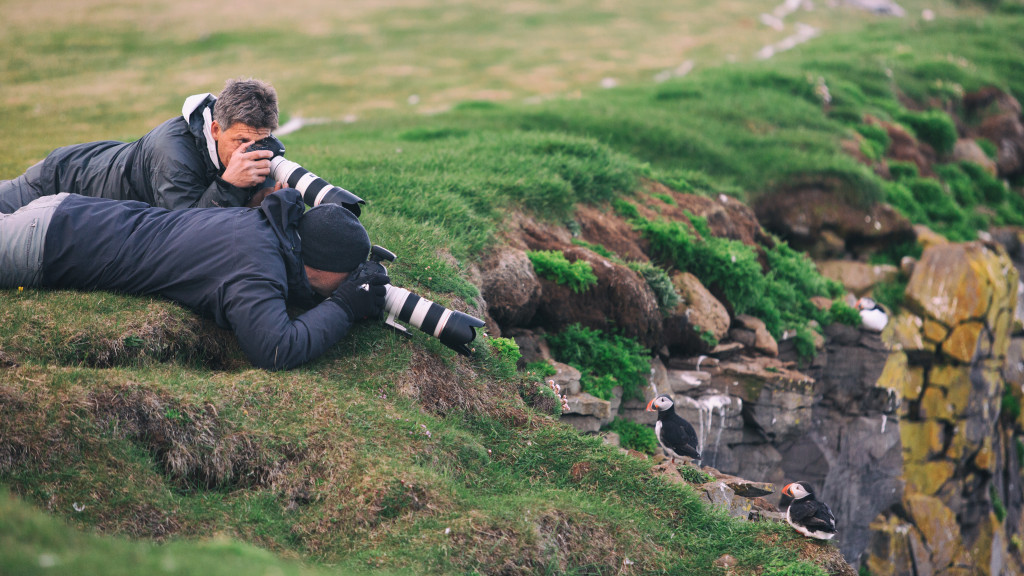
Photo by Michael Bonocore
Waterfalls
Iceland has no shortage of waterfalls. Thousands, ranging from large to small, dot the remote landscapes. While most are unmarked and only accessible by hiking or driving on dirt roads, the list below can be found easily along paved roads.
Gullfoss
One of the most popular waterfalls in Iceland is Gullfoss, a part of the powerful Hvítá river in Southwest Iceland. During the summer, the falls flow at 140 m³/s, making for beautiful, yet challenging photographs. At almost 2.5 kilometers wide, the waterfall is best photographed from the walkway with a wide angle lens, although tight crops on the powerful wall of water can also yield dramatic results.
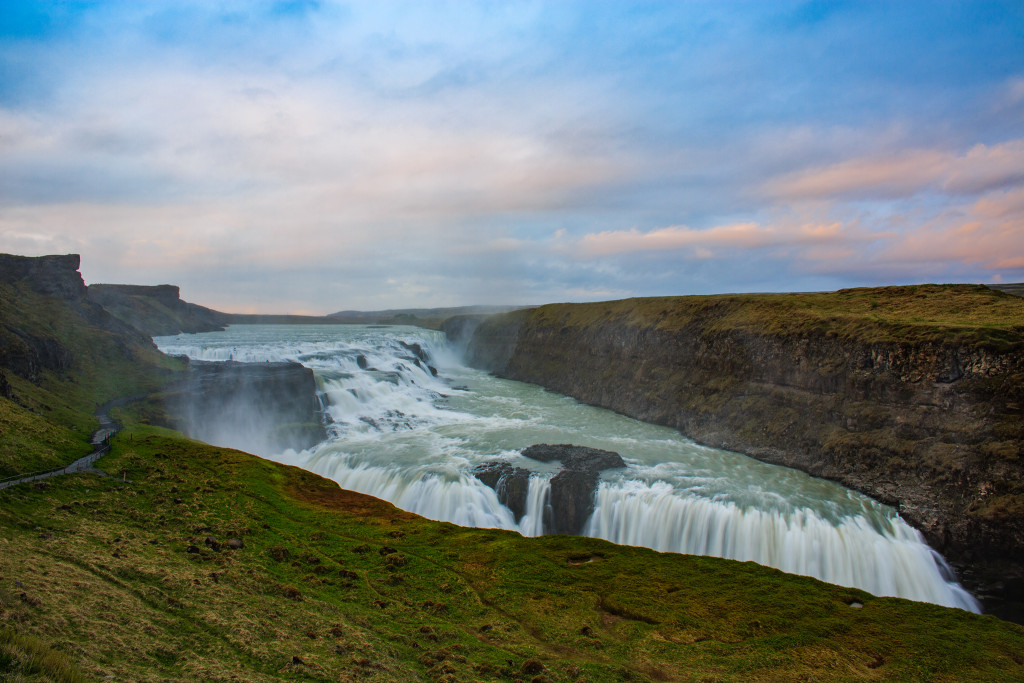
Photo by Michael Bonocore
Skógafoss
It is hard to believe that the coastline of Iceland used to extend to Skógafoss in South Iceland. Now, the 60-meter tall waterfall lies 5 kilometers from the current coastline. With a width of 25 meters, Skógafoss is one of the biggest waterfalls in Iceland. It’s large size is perfect for positioning a friend in front of the wall of water to show a sense of scale and add a bit of adventure into the photograph.
On sunny days, a single or double rainbow is almost always visible, due to the consistent spray that Skógafoss produces.
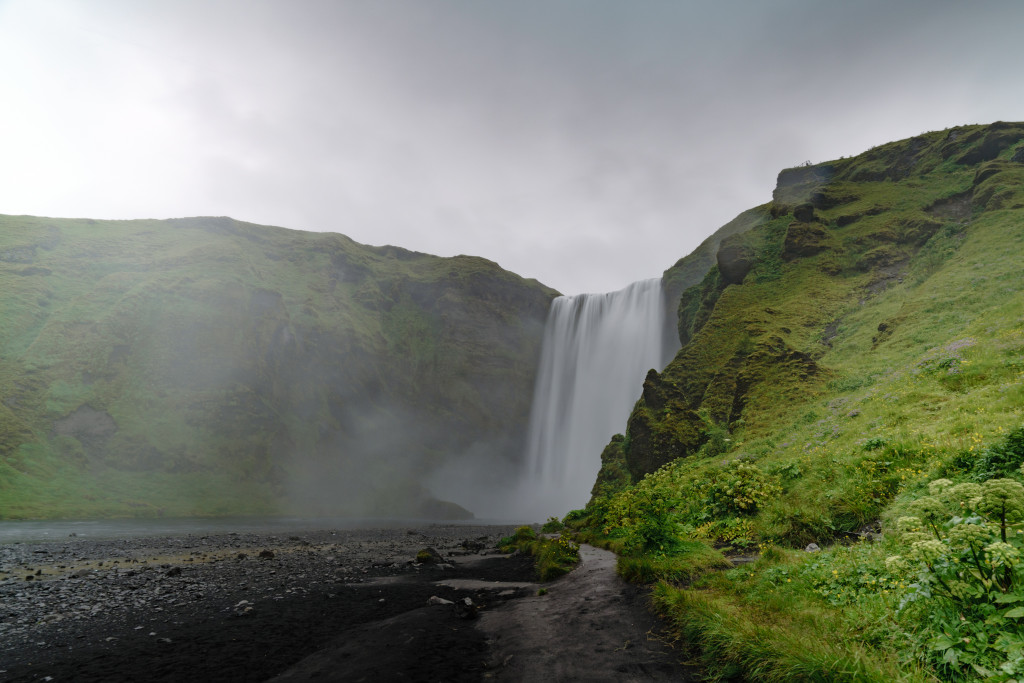
Photo by Michael Bonocore
Godafoss
Meaning “Waterfall of the Gods”, Godafoss is perhaps the most dramatic waterfall in Iceland. The river Skjálfandafljót flows 12 meters straight down producing a visually stunning landscape that can keep photographers entertained for hours. The sweeping landscapes behind the waterfalls provide excellent backdrops during summer sunsets and sunrises, as the clouds will often light up as far as the eye can see.
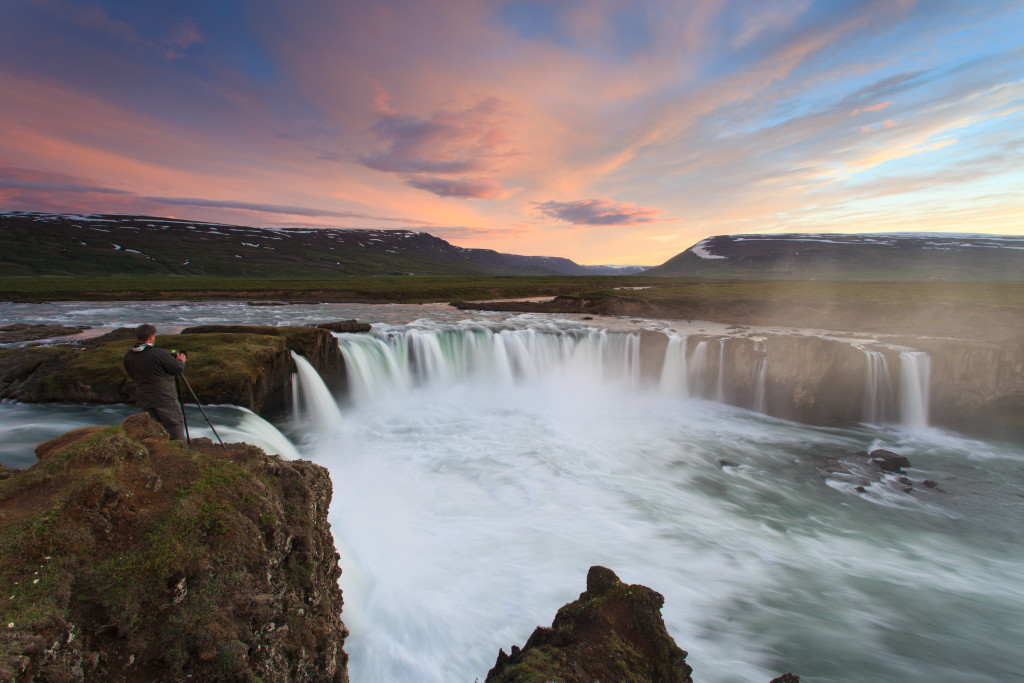
Photo by Michael Bonocore
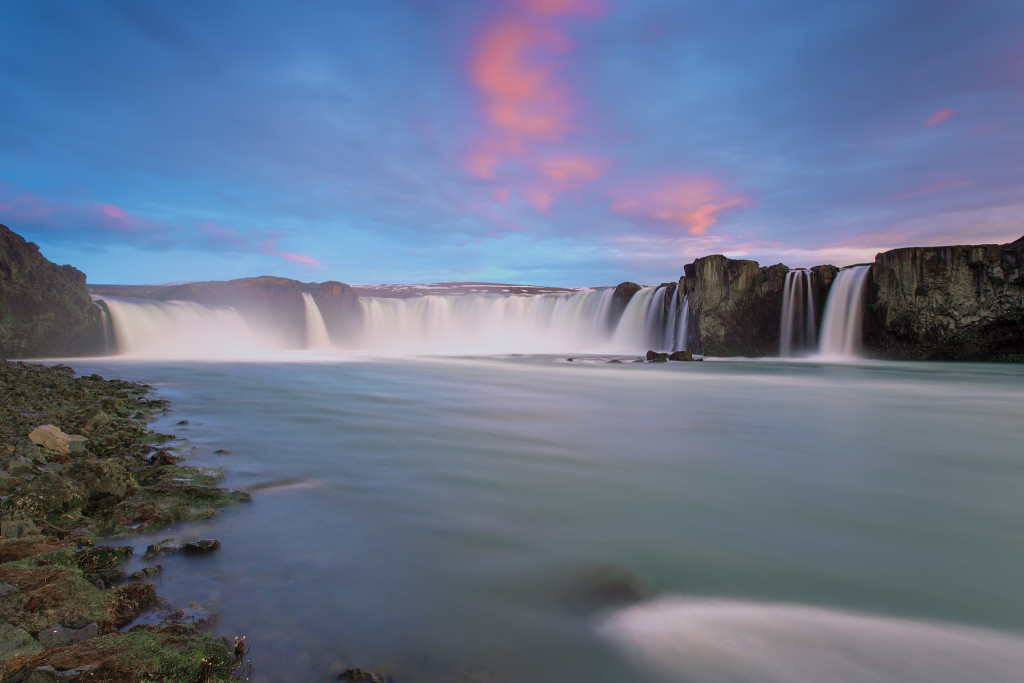
Photo by Michael Bonocore
Seljalandsfoss
Just off of Route 1 lies Seljalandsfoss, one of the most visited locations in all of Iceland. Visitors are able to walk into the cave behind the 60 meter waterfall, which can make for incredible and unique angles for your photographs. Although, usually the wind will blow the powerful waterfall into the cave, making it very hard to keep a lens dry for more than a couple of seconds. Photographers usually aim for a long exposure using an Neutral Density filter, which would also make it possible to achieve a silky water effect while keeping aperture open, which will limit the amount of water spots on the photos.
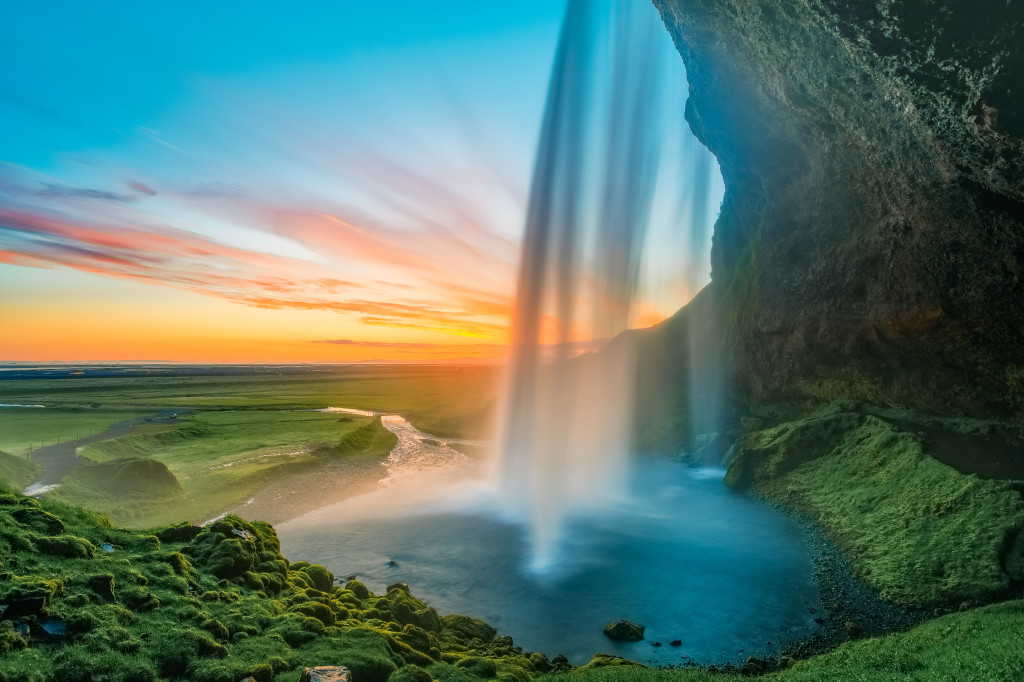
Photo by Michael Bonocore
The Countless Other Waterfalls
The incredible thing about Iceland is that the sheer number of incredible waterfalls that inhabit the terrain. Either roadside or just a short hike in, some of the world’s most fascinating waterfalls live in Iceland. Here are some others, with no locations given. Simply look!
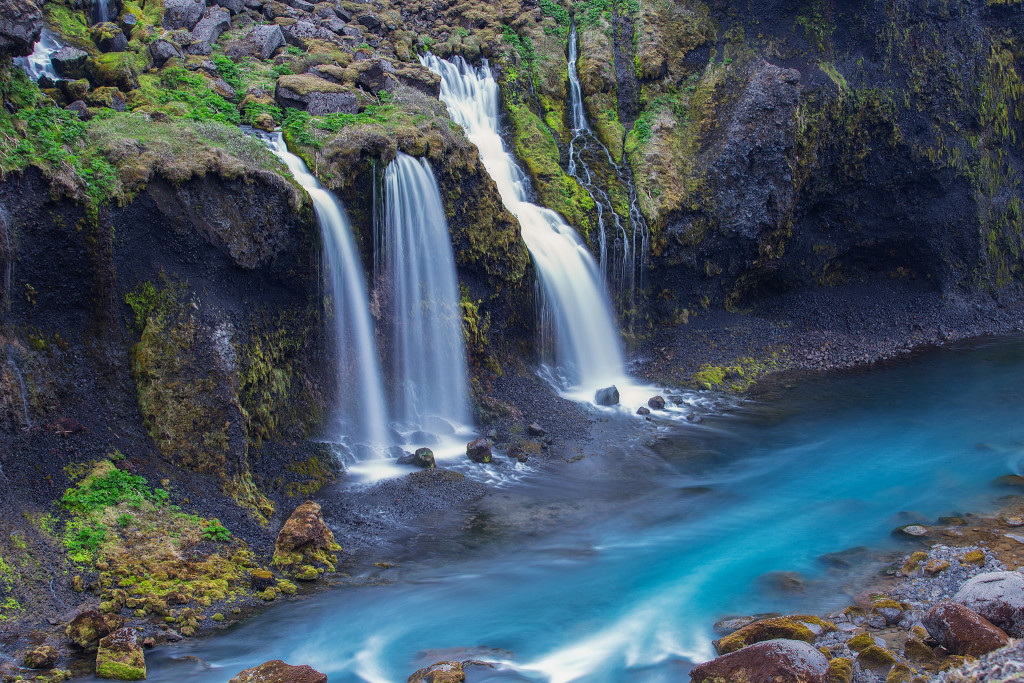
Photo by Michael Bonocore
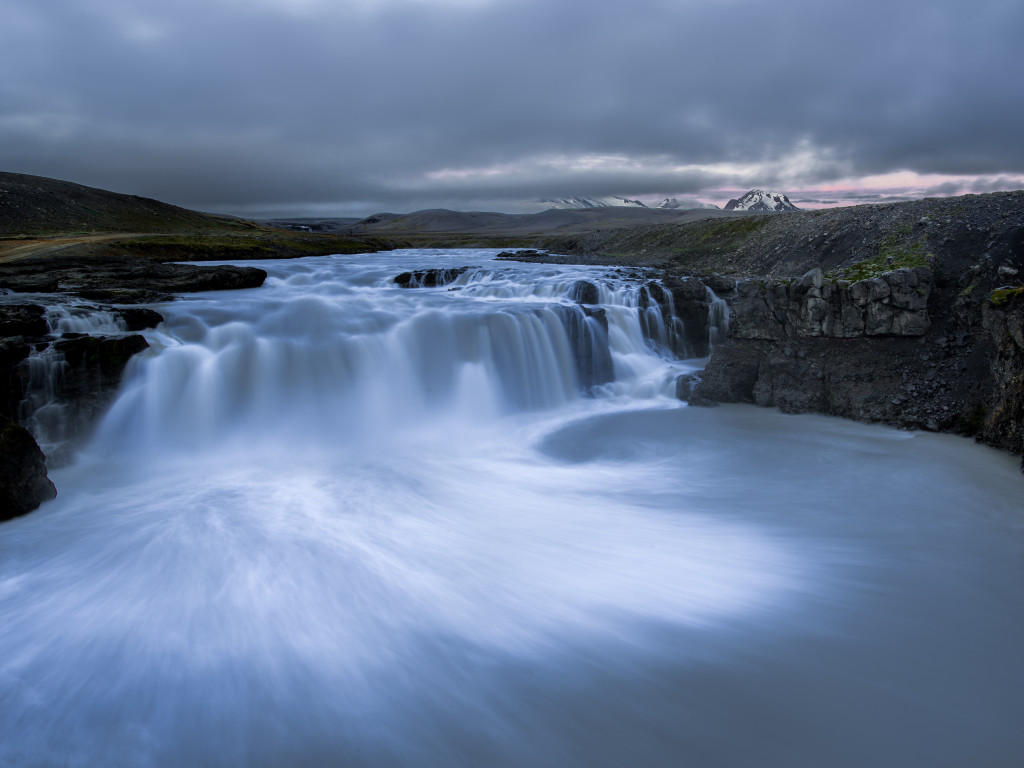
Photo by Michael Bonocore
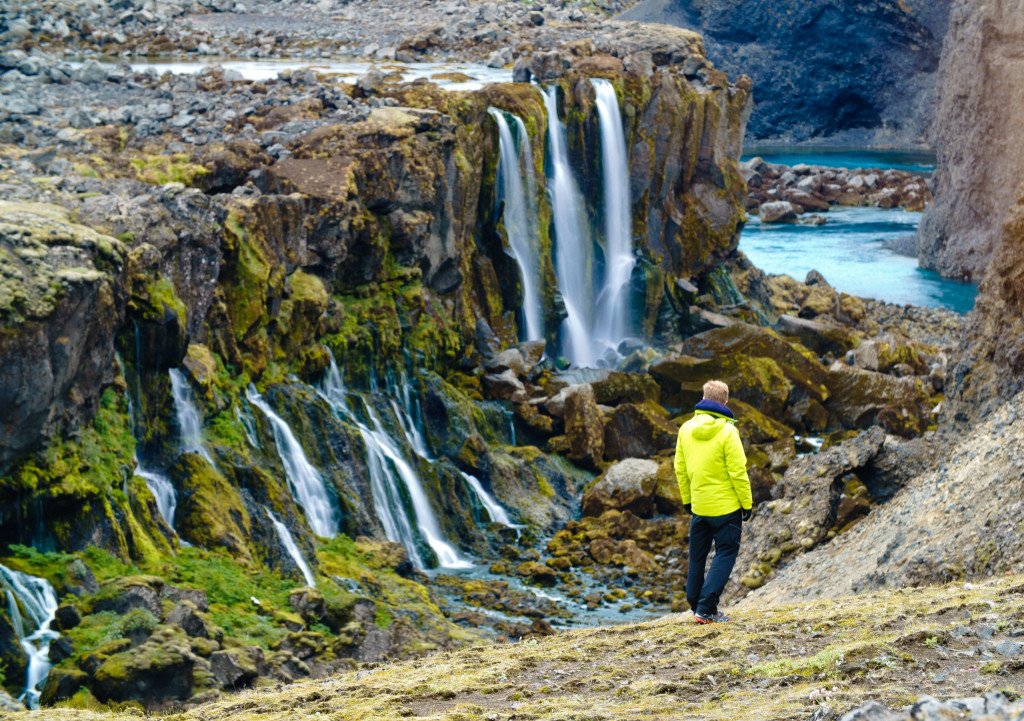
Photo by Michael Bonocore
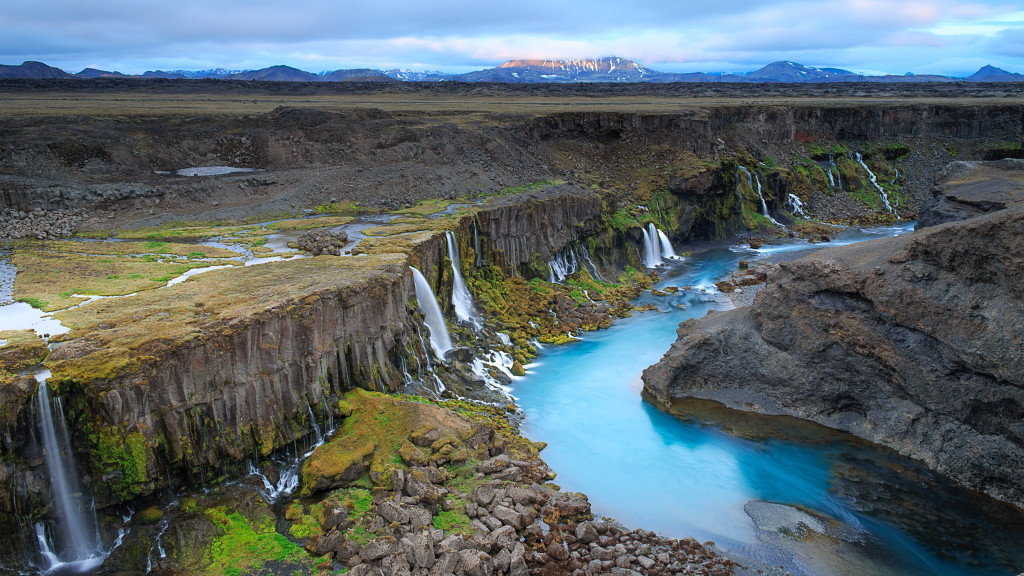
Photo by Michael Bonocore
8 Tips For Surviving Iceland
Pay off your credit cards
Those coming from the United States may be shocked at how much money they spend while in Iceland. Most everything is more expensive, due to it’s remote location and rebounding economy. Make sure to bring plenty of money, and keep a backup for emergencies.
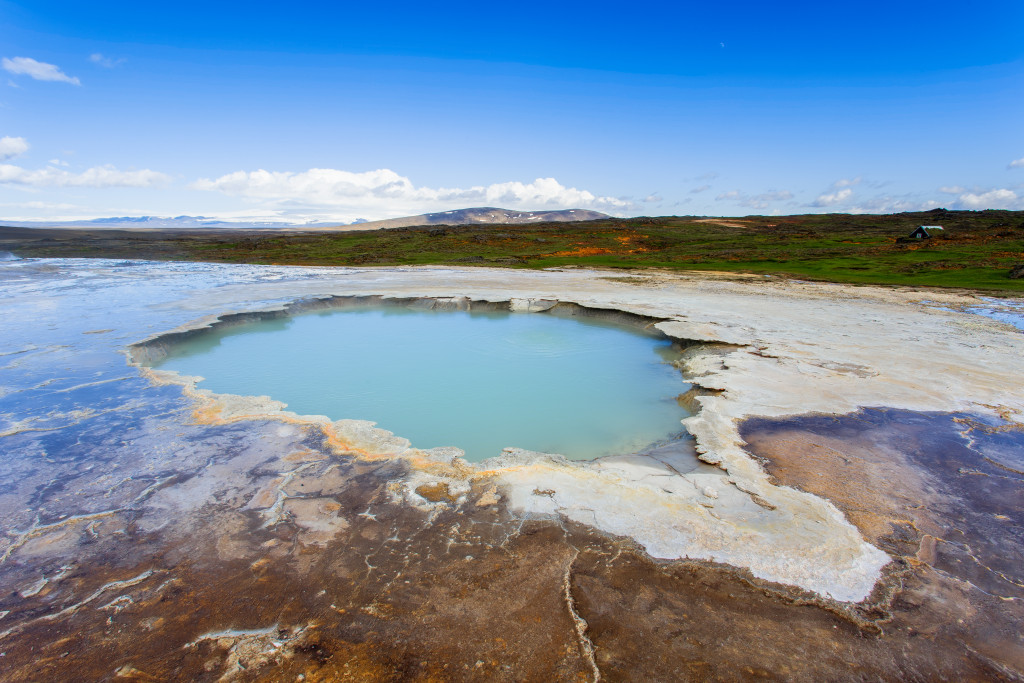
Photo by Michael Bonocore
Dress Warm
Although it is “summer”, Icelandic weather is notoriously unpredictable. You may wake up to clear skies and within an hour be engulfed in a powerful rain storm with winds strong enough to blow you over. Be prepared with clothing ranging from shorts and swim suits (for the hot springs) to puffy parka jackets and long underwear.
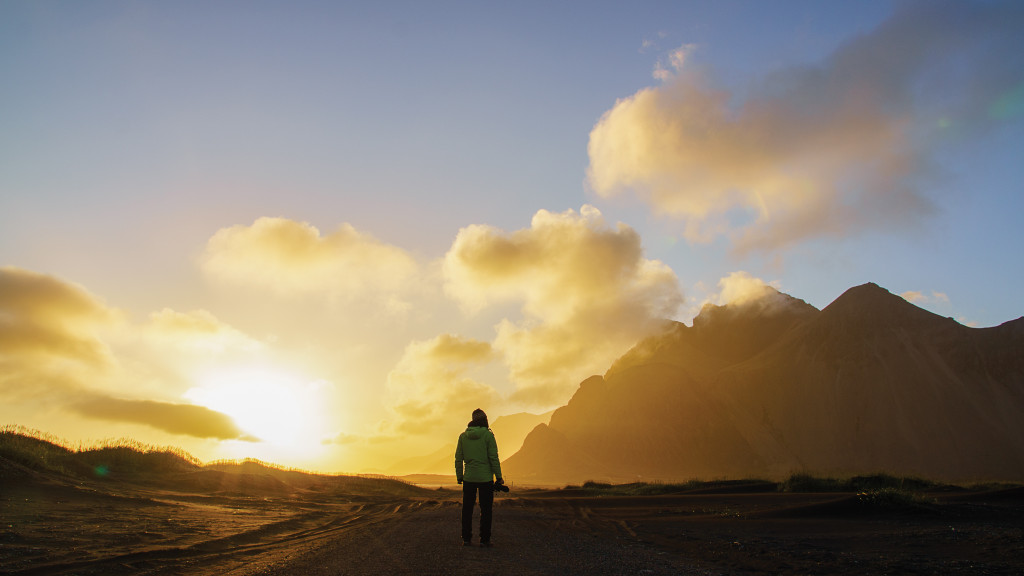
Photo by Michael Bonocore
Don’t drive offroad
In addition to housing some of the most unique landscapes in the world, Iceland is also one of the most sensitive locations on the planet. Icelanders take great pride in their home, and driving offroad is strictly forbidden, legally and morally. Stick to the roads (paved or dirt). There is plenty of amazing scenes to be found.
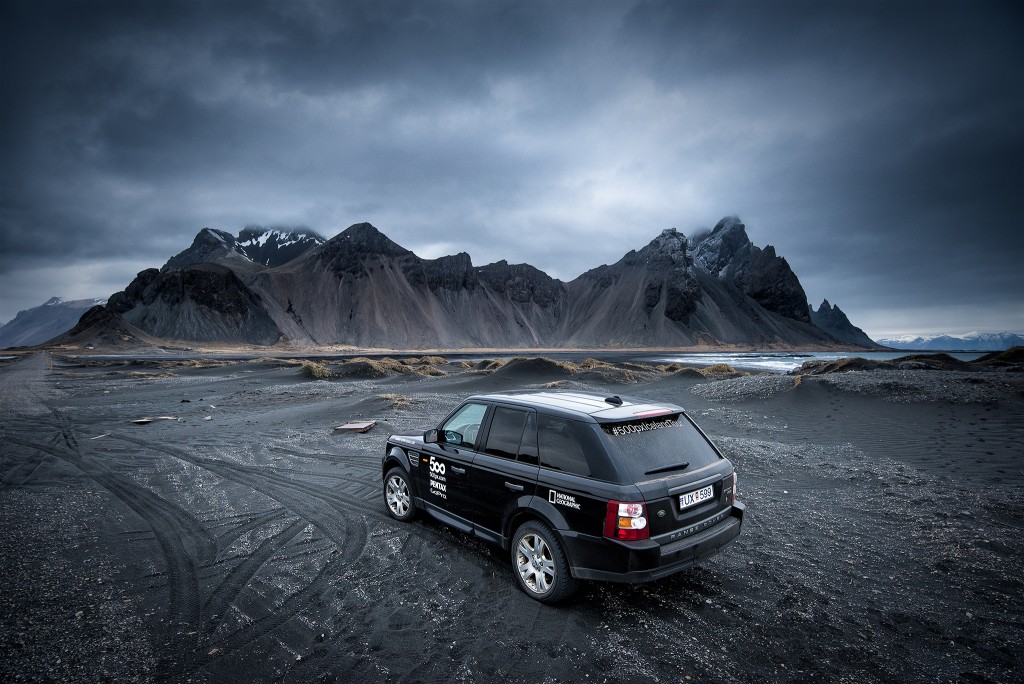
Photo by Evgeny Tchebotarev
Chase the light
The Iceland Meteorology Office has the best weather predictions for the island. Do not rely on any general weather apps. The ICO website will allow you to find the sections of the country that will be partly cloudy or sunny, as opposed to the gray blanket that can hangover the landscapes.
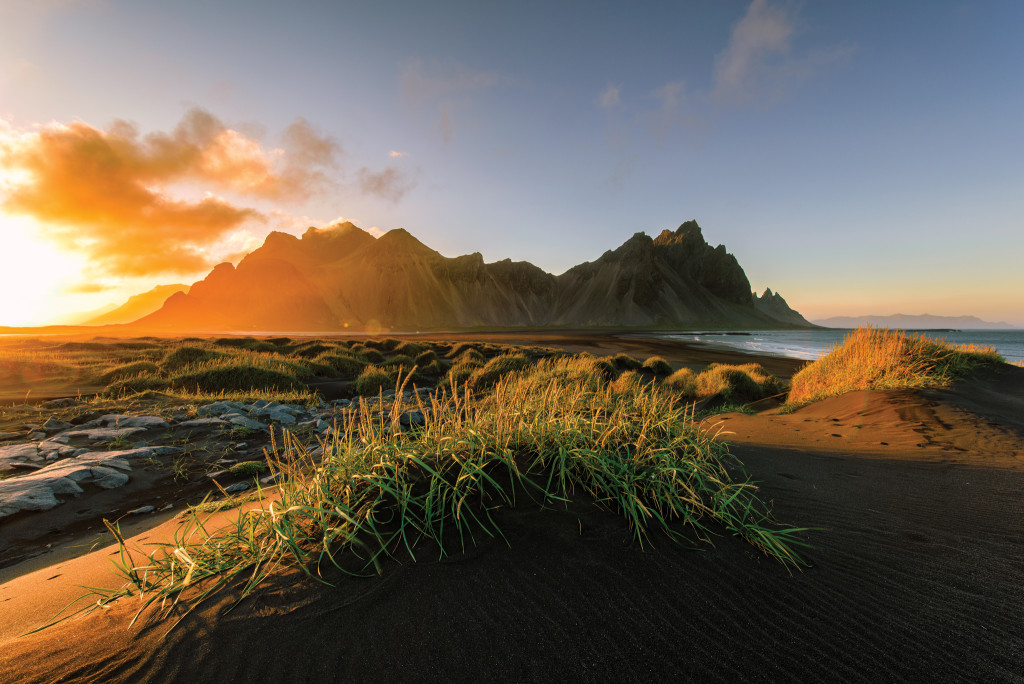
Photo by Evgeny Tchebotarev
Sleep Wherever
If you are going to Iceland in search of the epic light that you envision, it is best to not tie yourself into hotel reservations. While researching the weather on the ICO website, you may find yourself driving clear across the island in search of good light. Not locking yourself into a room and simply camping or renting a camper van from Happy Campers will allow you to sleep wherever the light takes you.
Stock up on supplies
Across Iceland, you can often drive for quite a while before seeing any sign of civilization. Even when you do arrive at a town, often, the services are limited to a fuel station (which usually often includes a restaurant). But clothing, camping equipment and general tools will be hard to come by, so make sure to purchase these supplies in Reykjavík before heading out on the road. Or better yet, save some money and buy everything you need at home before you travel.
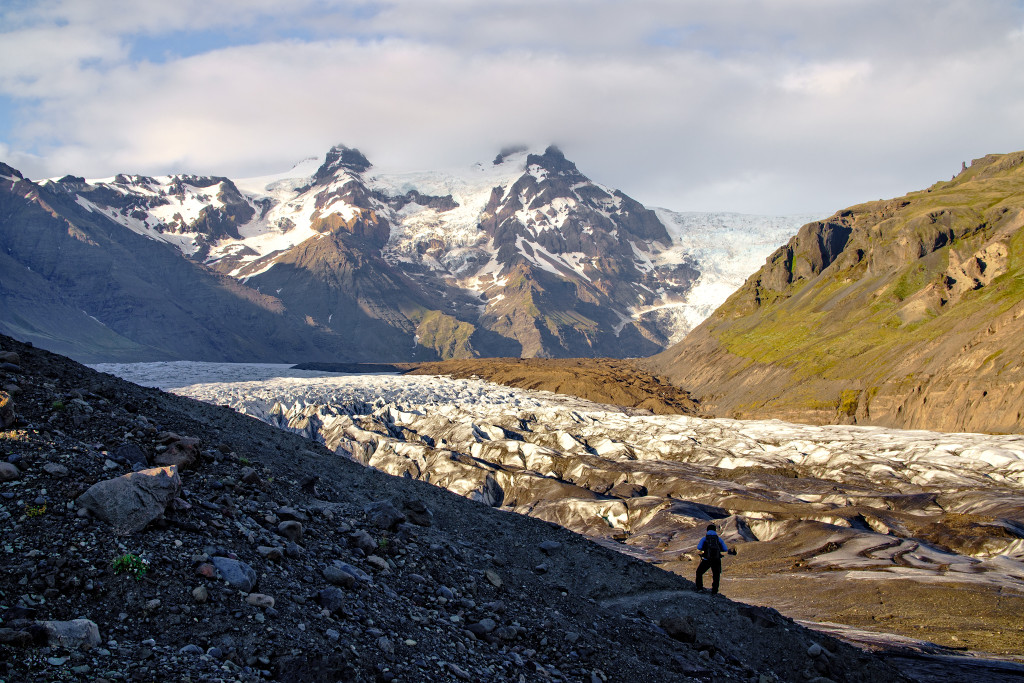
Photo by Michael Bonocore
Trust the professionals.
Iurie Belegurschi and his team at Guide to Iceland (guidetoiceland.is) offer photo tours of the incredible country, and if you aren’t ready to plan your trip or simply go with the flow, these photo tours are an incredible way to see the most amazing locations in Iceland from a team who knows what you are looking for as a landscape photographer.
Remember to put the camera down
Iceland is one of the most amazing places on the planet, but don’t assume you will get the incredible clouds and light that you have seen in photographs. Often, a gray blanket can live in the skies over the island, and it’s not uncommon to not see a break in the clouds for days, or sometimes weeks at a time. Remember to take time to put the camera down and simply appreciate that you are standing in one of the most wild and gorgeous locations in the world.

Photo By Benjamin Hardman


10 comments
Wow, the fjords are eye-catching and just breath-taking! For sure I want to see these beautiful views by myself sometime. Hope I will)
qfl639
n159j3
bq0d7k
r8e18i
ryn5m0
h79417
nsl7cu
ynzcjw
opxzp5